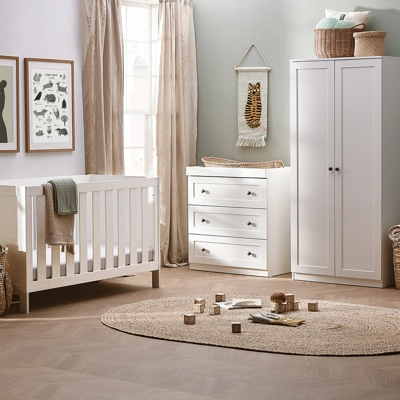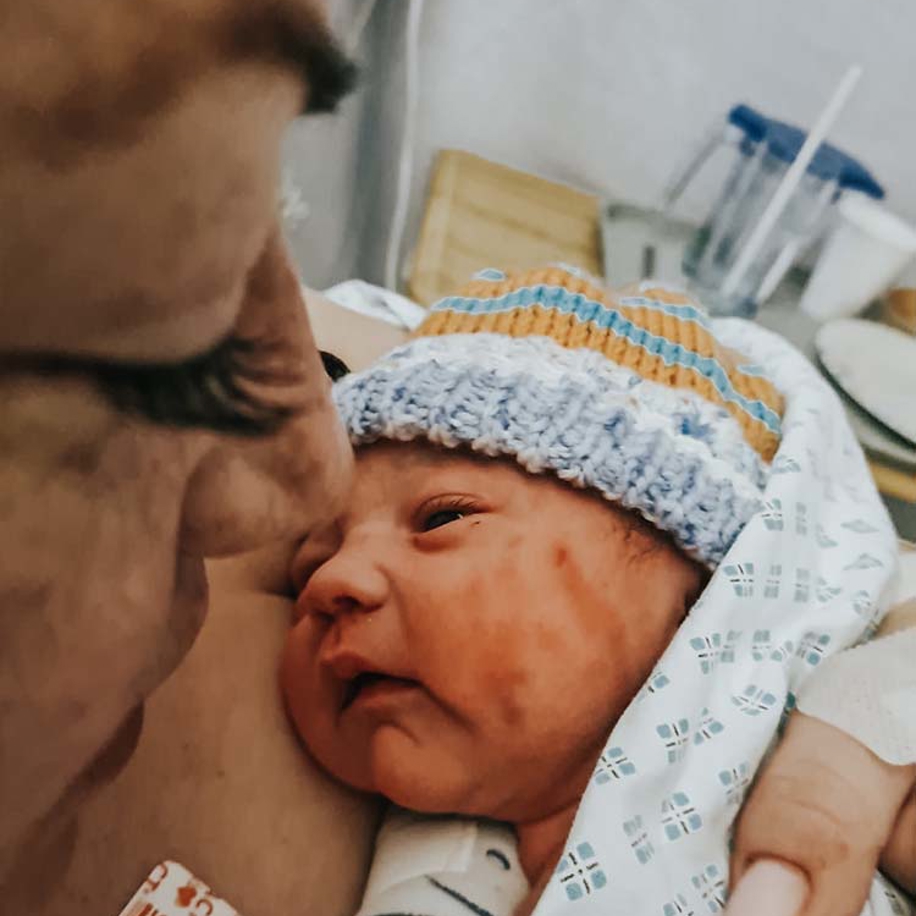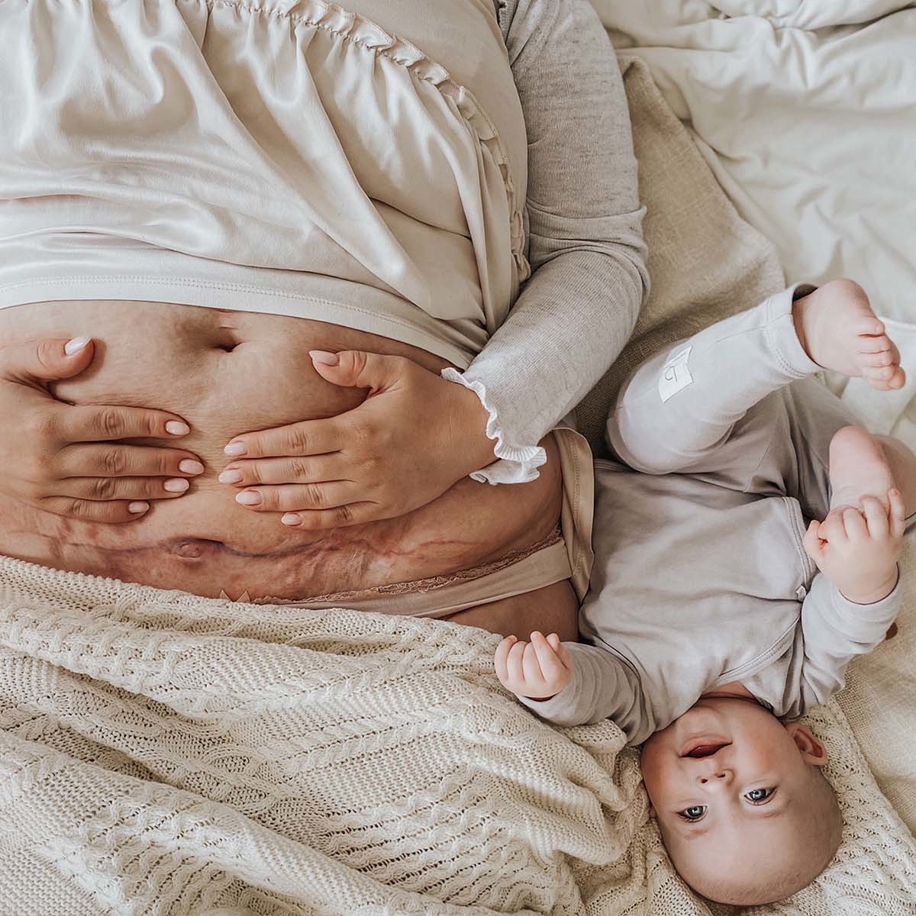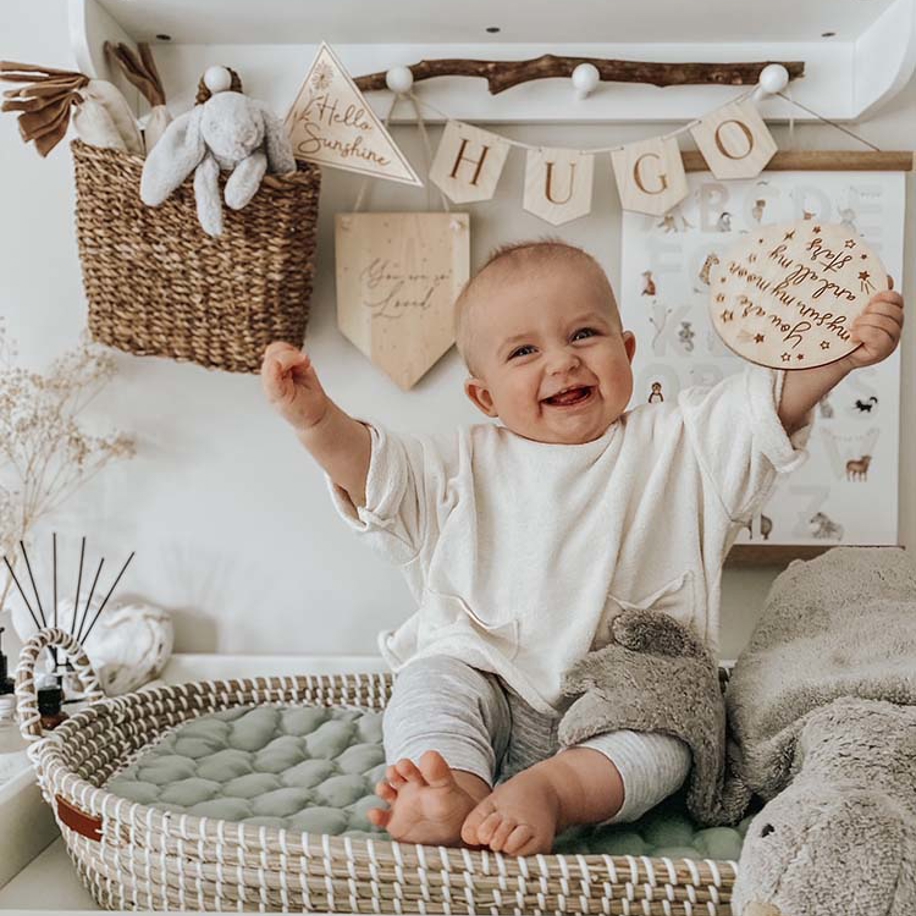
Sale
New In
Pushchairs & Strollers
Car Seats
Nursery
Feeding
Family Hub

Includes Buffet Highchair, Mealtime set, Silicone tray

Includes Clic 2 stroller, Clic stroller bag and rain cover


For the best night’s sleep in every trimester
[TW: This article discusses birth trauma and miscarriage and may be triggering for some readers.]
06:09am March 4th 2020 – the exact moment I saw the word ‘pregnant’ on a digital pregnancy test for the second time.
This would be my first successful pregnancy after a year trying to conceive after miscarriage. In my experience no one speaks much of loss, the niggling worry of what happened before stuck with me way into my second pregnancy. My 12-week scan was hard to walk into alone after our last experience, but it gave us the happy news we’d hoped for. At a private scan with my partner Tom at 16 weeks, we found out we were expecting a beautiful baby boy.
My pregnancy seemed, of what I knew, relatively normal. After the 20-week scan some worries slipped away and we started to enjoy the pregnancy. Weeks flew by as we decorated the nursery and made plans for our baby’s arrival. At later scans, we were told baby was laid transverse breech and I was diagnosed with Polyhydramnios. This cancelled plans of the dreamy waterbirth I’d read so much about as it placed me in a ‘high risk’ category, but I continued looking into other options, reading positive birthing stories and took a hypnobirthing course.
By 36 weeks, I was told at our final growth scan that baby wasn’t likely to move and given the options I requested an elective C-section. By 37 weeks my swelling had caused a fall which took me to my midwife early. At this appointment I had three red flags – protein in urine, high blood pressure and swelling. I was sent to hospital where I was reviewed by a consultant and booked for induction the following day. It all felt so sudden and the next morning when Tom dropped me at the ward doors with my bags, I crumbled. The midwives took me straight through and started the induction process. I spent 4.5 days trying various induction methods and being treated for cellulitis, the rash on my bump.
On day five I was taken to delivery and my waters were broken when Tom arrived. I remember feeling a rush of excitement knowing we’d soon meet our baby. I was hooked up to the drip not long after and managed without pain relief for around five hours before asking for an epidural, an instant relief I wish I’d asked for sooner – though I was proud I had lasted that long.

Music played, Tom spritzed aromatherapy around the room, and we chatted away to the midwives – this brief period of time I look back on so fondly. Throughout the afternoon my temperature spiked, the rash on my bump spread and I wasn’t dilating beyond 2cm. The baby didn’t like the drip and his heart rate dropped frequently, but it wasn’t until groups of doctors kept visiting that I realised things weren’t going to plan. I still held on to the hope I’d be able to deliver him naturally. At around 10pm, the doctors revisited with a plan of action for the midwives to try get things moving, but at midnight I was handed papers to sign to be taken to theatre for an emergency C-section.
I remember this moment vividly; an overwhelming feeling of failure and fear and I often wish I could go back to that moment and hug myself. Everything happened incredibly quickly and within minutes I was in theatre with a team whirring around me and my anaesthetist, Phil, talking me through the spinal block he was about to administer.

Tom sat calmly beside me, I felt a warm rush and before I knew it they were operating. The next thing I remember was the anaesthetist standing quickly and hearing more people enter the room. Everything that followed is a blur of vivid but disjointed short memories, alarms and being told which injection was next. I later learnt they needed to cut across my womb in an additional place to help deliver baby. Through this I lost a lot of blood and it was a physically rough operation which took 2.5 hours, a crash team and an off-duty consultant.
Our beautiful baby boy, Hugo, entered the world at 01:53am on October 29th 2020. I remember waiting for his faint cry, but his breathing was harboured so he needed to go to NICU. He was briefly held to my cheek before being carried away and despite the fuzziness of my memories, I remember clearly studying the parts of his face I could see around the tubing, and his gorgeous chubby cheeks.
I woke up in recovery to see Hugo being held by his dad. He had only spent a few hours in NICU and was bundled in his first outfit. I was on a lot of pain relief, so midwives helped me hold Hugo for the first time hours after he was born. Later, I was moved to the post-natal ward where Tom had to leave again.
The level of surgery I’d had meant I needed closer care and the drains and pain from surgery made it hard for me to care for Hugo. In the days that passed I became very unwell with spiking temperatures and blood tests and CT scans showed internal bleeding and confirmed sepsis. I can admit now that my mental health was in a bad place then. The trauma of induction, labour and my theatre experience mixed with the level of pain and the severity of sepsis weighed heavily and I made the hard decision to discharge Hugo to be at home with Tom whilst I was treated.

I spent a further two weeks on close care, with strong antibiotic mixes, tests, scans, dressing changes and just hour-long visits from Tom and Hugo. Midwives would sit with me in my worst moments and just listen or let me cry (if they ever read this, they’ll know who they are and please know how much this meant to me).
On my original due date, I was discharged. Walking in to see Hugo in our home is a moment I’ll never forget. The next five days were spent doing nothing more than cuddling him, enjoying home comforts and delicious non-hospital food!
But after those short five days I was rushed back into hospital. My temperature was soaring, sepsis remained, and a new CT scan found a huge infection in my pelvis. I was placed in 1:1 care and I had two blood transfusions, but later that night I was struggling to breathe and was moved by ambulance to the city’s sister hospital for emergency surgery. All of this happened alone, and at 3am I was asked to call Tom and place him on loudspeaker so the consultant could explain what was happening.
A new team of doctors and consultants met me there and explained my C-section needed reopening to clear the infection and they weren’t sure what the situation would be when I woke up. When I did wake, the consultant explained they hadn’t stitched me up fully, leaving sections open, and my recovery would likely be months as the wound healed from the inside out, needing daily specialist care.

Trauma hit again. I developed a deep fear of my own body, unable to touch anywhere below my belly button and lost my voice for eight weeks which they diagnosed after various tests as psychological trauma. The 2.5 weeks following this surgery were the hardest, I missed my baby, fearing he didn’t know who I was anymore and struggled to process what was happening to me. Hourly visits weren’t enough, but I wasn’t well enough to keep Hugo with me. My room was overcrowded with specialists during the checks on my stats and wound and I longed to be at home.
The operation, though extreme, worked. My temperature lowered and I healed as they had hoped. I was discharged again after 2.5 weeks. Nurses visited me daily at home to dress my wound and I saw the consultant once a week at the hospital. I had a few further small infections and was on tailored antibiotics for nearly three months but luckily, the nurses tweaked my care to prevent a third operation and at six months postpartum my scar finally closed.
Writing this feels somehow cathartic, though in parts upsetting. It’s a reminder of just how far I have come. I struggled to get any of the help I needed to process the trauma. I was denied counselling for PTSD and some days are still hard. Learning to love my new body and the unusual scar and shape I’ve been left with is a journey I’m still navigating. But it gave me my rainbow Hugo and for that I am forever grateful. He is absolutely thriving and the happiest, funniest little boy and so worth it all.
I’d encourage anyone reading this who has been through similar to open up to those you’re closest to, share your feelings and reach out for support. There’s lots of amazing support and advice networks available – I found the birth trauma association website and parent support groups on Facebook helped me a lot during my journey. Birth trauma is not something you should be left to deal with alone and I found talking to someone, whether they had been through similar or not, helped me through it so much.
Just know that none of it is your fault and every birth story is different. You grew and birthed life, whatever the circumstances, and for that you and your body are absolutely amazing!
